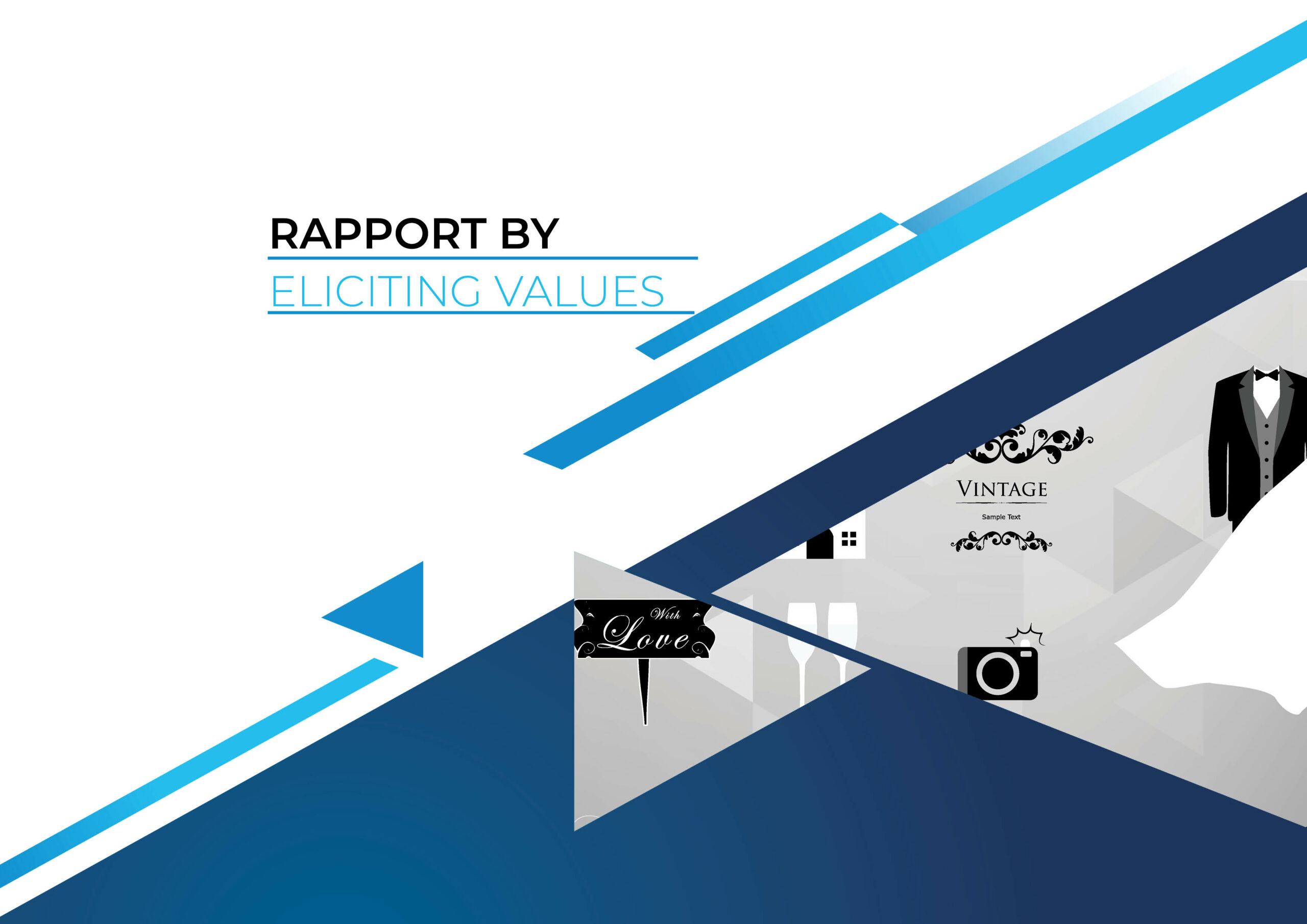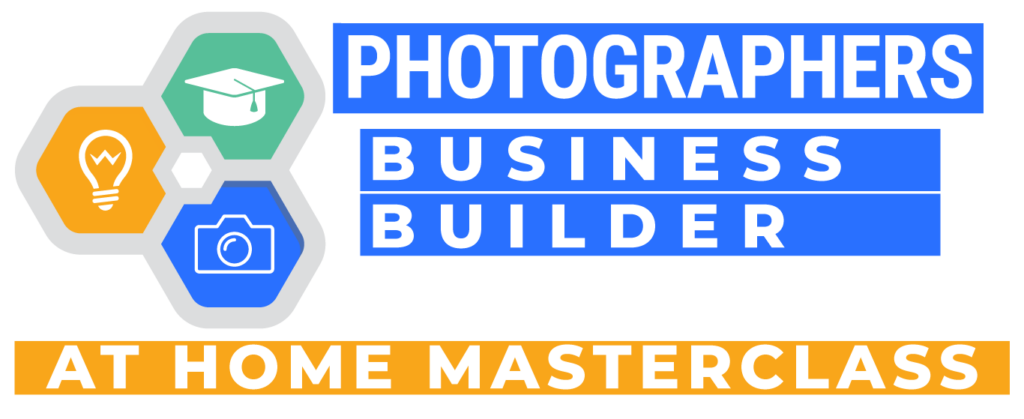Content Strategy

S1.4 Small Talk vs Rapport and how to Build Actual Rapport
Overview
This module focuses on distinguishing between small talk and rapport-building in the context of wedding photography bookings. It emphasizes the importance of genuine rapport-building over superficial conversations, showcasing the significance of eliciting client values and utilizing open-ended questions for better understanding of clients’ needs and preferences. The ultimate goal is to foster stronger relationships, increase client satisfaction, and secure more bookings by tailoring the photographer’s approach to align closely with clients’ unique expectations.
By The End of This Lesson Students Will Be Able To
By the end of this section, students should be able to:
- Distinguish between small talk and building rapport. Understand that small talk often doesn’t contribute to understanding client needs and may be viewed as a waste of time, whereas rapport-building cultivates trust and empathy, understanding client expectations and preferences.
- Recognize the negative impact of relying on superficial conversations, which can create a disconnect with clients and potentially harm the photographer’s professional image.
- Understand that rapport-building is essential for demonstrating professionalism, expertise, and genuine interest in a client’s vision. This helps in increasing the likelihood of securing bookings.
- Prioritize eliciting client values as a core strategy in building rapport. This involves uncovering client beliefs, desires, and expectations, leading to a meaningful connection based on understanding and trust.
- Apply the concept of eliciting values in the sales process, which involves understanding potential customers’ needs, preferences, and priorities, leading to increased satisfaction and a higher likelihood of closing a sale.
- Understand the role of open-ended and closed-ended questions in the process of building rapport. Open-ended questions encourage a deeper understanding of client needs and perspectives, while closed-ended questions help to control the direction of the conversation.
- Use open-ended questioning effectively in a sales process, which involves encouraging clients to share their vision, actively listening, clarifying and confirming understanding, aligning offerings with customer values, and validating and supporting decision-making.
- Realize the importance of open-ended questions in establishing trust, uncovering unique requirements, identifying priorities, encouraging creative collaboration, and engaging clients in the wedding photography context.
- Develop the skill to ask relevant open-ended questions to understand and meet the unique expectations of wedding photography clients.
- Appreciate the significant role of open-ended questioning in enhancing rapport-building, leading to better client satisfaction, stronger connections, and successful bookings.
Course Content
Small Talk vs Rapport and how to Build Actual Rapport
In the competitive world of photography, securing bookings is crucial for a photographer’s success. However, in their pursuit to win clients, photographers may inadvertently engage in excessive small talk or discussions on unrelated topics instead of genuinely building rapport. Understanding the distinction between the two and the negative impact of relying on superficial conversations is essential for photographers to refine their client acquisition strategies.
Small talk and conversations about news, crime, international politics, conspiracy theories, favorite football teams, or high schools attended may give photographers the illusion of building rapport with potential clients. While these topics can serve as icebreakers, they rarely contribute to a deeper understanding of the client’s needs, preferences, and expectations. In fact, they may be perceived as a waste of time and can create an opening for other photographers to swoop in and establish a more meaningful connection.
In contrast, building rapport involves cultivating trust, empathy, and understanding between parties. This type of connection is forged through active listening, genuine interest, and meaningful conversations about the clients’ hopes, dreams, and aspirations for their special event, such as their wedding day. When photographers focus on rapport, they demonstrate their commitment to understanding a client’s vision, which is invaluable in winning bookings.
One key factor that distinguishes rapport-building from small talk and unrelated conversations is the level of engagement. In superficial discussions, the conversation tends to be shallow, impersonal, and less engaging, which may result in clients feeling disconnected from the photographer. However, rapport-building encourages open, honest, and insightful discussions, enabling photographers to create a strong bond with potential clients.
Moreover, excessive small talk and unrelated conversations can be detrimental to a photographer’s image. Clients may perceive them as insincere or lacking in substance, leading to a loss of credibility and trust. By prioritizing rapport-building, photographers can demonstrate their professionalism, expertise, and genuine interest in their clients’ vision, thus increasing the likelihood of winning bookings.
In conclusion, photographers who emphasize rapport-building over small talk and unrelated discussions are more likely to succeed in securing bookings. By engaging in meaningful conversations and demonstrating genuine interest in their clients’ aspirations, photographers can foster strong relationships that translate into increased bookings and long-term success in the industry. Therefore, it is crucial for photographers to recognize the pitfalls of relying on superficial conversations and adapt their communication strategies accordingly.
In the pursuit of building genuine rapport with prospective clients, photographers must prioritize eliciting values as a fundamental strategy. By uncovering the clients’ core beliefs, desires, and expectations, photographers can establish a connection based on understanding and trust. This approach enables photographers to create a strong bond with potential clients while showcasing their commitment to fulfilling the clients’ vision.
Eliciting values in the sales process is an essential technique employed to understand the needs, preferences, and priorities of potential customers. This concept is based on the idea that by uncovering a customer’s values, a salesperson can tailor their approach and offer solutions that resonate with the customer’s unique needs, leading to higher satisfaction and an increased likelihood of closing a sale.
In the context of booking wedding photography clients, eliciting values through asking open-ended questions is crucial for understanding the couple’s preferences and priorities. This ultimately enables the photographer to provide a tailored service that meets their needs.
Eliciting values in the wedding photography sales process is critical for building rapport with potential clients, ultimately improving your chances of booking clients and increasing their satisfaction with your services. The art of asking open-ended questions is essential to the eliciting values process of building rapport. These questions encourage deeper conversations and invite people to share their opinions, experiences, and emotions. By asking open-ended questions, one can better understand the needs, priorities, and perspectives of others, leading to more effective problem-solving, decision-making, and collaboration.
Closed-ended questions, in contrast to open-ended ones, aim to gather essential information about clients. The main difference is that closed-ended questions lead to specific answers, such as yes or no, or a multiple-choice option. Open-ended questions, on the other hand, allow for a more fluid conversation flow between the photographer and the clients, while closed-ended questions help the photographer maintain control over the direction of the conversation.
For example, a photographer could ask, “Do you have any other questions that I can answer for you today?” which is a closed-ended question because the answer is either yes or no. Alternatively, they can ask, “What other questions can I answer for you today?” which encourages further dialogue.
The following steps outline how to apply the concept of open-ended questioning in the wedding photography sales process:
- Encourage the couple to share their vision for their wedding photography by asking open-ended questions such as “What kind of atmosphere do you want to capture in your wedding photos?” or “What are the most important moments you’d like to be documented on your big day?”
- Listen actively: Pay close attention to the couple’s responses, both verbally and non-verbally, to gather insight into their preferences and priorities. Take note of any specific themes or ideas that are important to them to further ask more open-ended questions.
- Clarify and confirm understanding: Ensure you have a clear understanding of the couple’s values by asking follow-up questions or paraphrasing their statements in the form of a question seeking clarification. This shows that you are attentive and committed to meeting their needs.
- Align your offering with customer values: Openly state that your photography packages and services align exactly with the couple’s values and that you are very happy about that. For example, if the couple values candid moments, emphasize your expertise in capturing genuine emotions and spontaneous interactions.
- Validate and support decision-making: Help the couple feel confident in their decision by validating their values and offering any additional information they may need. For example, provide examples of past work that aligns with their preferences or offer testimonials from satisfied clients with similar values.
In the context of wedding photography, open-ended questions can be particularly valuable for the following reasons:
- Establish trust and rapport: By asking open-ended questions, wedding photographers demonstrate genuine interest in the couple’s vision and preferences. This helps build trust and rapport, laying the foundation for a strong working relationship. Open-ended questions show genuine interest in clients’ thoughts and opinions, fostering trust. Inviting clients to share their expectations, concerns, and desires makes them feel valued and understood, ultimately increasing the likelihood of securing a booking.
- Uncover unique requirements: Open-ended questions can reveal specific aspects of the couple’s expectations for their wedding photography, such as desired style, important moments to be captured, and any unique requests or considerations. Engaging clients in conversation increases the likelihood that they reveal their true requirements and expectations for their wedding photography. By asking open-ended questions like, “Where will you both be getting ready on the wedding day?”, photographers can better understand their clients’ needs and tailor their offerings accordingly. For example, if a couple mentions they will be getting ready at two different locations 30 minutes apart, the photographer can assure them that their team specializes in capturing both the bride and groom’s preparations and suggest a suitable package.
- Identify priorities: Understanding a couple’s priorities, such as budget constraints, artistic vision, or specific photographic techniques, allows the photographer to tailor their offerings and approach to better align with the clients’ needs.
- Encourage creative collaboration: Open-ended questions can inspire couples to share their creative ideas and preferences, enabling the photographer to develop a customized photography plan that reflects the couple’s unique vision.
- Engage clients: Open-ended questions encourage clients to discuss their interests and concerns. Engaging in meaningful and relevant conversations helps build rapport, making it easier to understand their needs and preferences, and ultimately, close a booking.
Some examples of open-ended questions that a wedding photographer might ask include:
- How would you describe the overall style or theme of your wedding?
- What are the most important moments you want to be captured on your big day?
- Can you share some examples of wedding photography styles that you like?
- Are there any specific locations or backdrops that you would like to include in your photos?
- How would you like your wedding story to be told through the photographs?
- What are your expectations regarding the timeline for receiving your final images and/or album?
- Are there any unique aspects of your wedding that you’d like to emphasize in your photos?
Building rapport is significantly enhanced by eliciting values through the use of open-ended questioning. This approach fosters genuine engagement, trust, and understanding between the photographer and clients, laying the foundation for a strong professional relationship. Open-ended questions encourage clients to share their needs, preferences, and concerns, enabling the photographer to tailor their services to align with clients’ unique expectations. By actively listening and demonstrating genuine interest in clients’ perspectives, photographers create a comfortable environment for open dialogue, ultimately leading to better satisfaction, stronger connections, and successful bookings. This customer-centric approach is essential for any wedding photographer seeking to provide exceptional service and create lasting, positive impressions. By building rapport using these techniques, wedding photographers can drastically increase the percentage of interested prospects they convert into paying customers.
Cognitive Engagement Questions
© 2023 Karimah Clinton Academy. All rights reserved.
